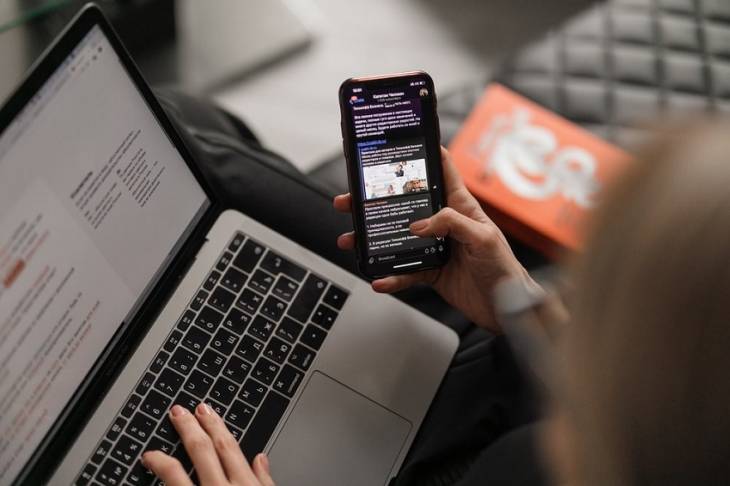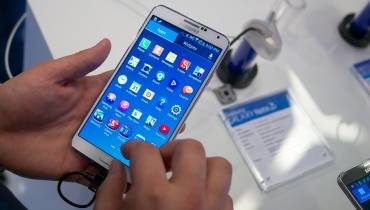Intersection of Mobile Apps & Education: How It's Transformed Learning

Students and learners these days are fond of technology, including gadgets and mobile apps. The ever-evolving world of mobile apps, in particular, continues to engage young learners in classrooms.
From popular social media platforms like TikTok and Instagram to gaming apps and cool photo editing and special effects apps, mobile apps take up a lot of young people's time today. This is why institutions of learning and educators are trying to mitigate any unfortunate distaste for learning and classes with innovative mobile apps that make learning fun.
Mobile learning apps, a popular app category nowadays, is accessible through smartphones and tablets, and these learning apps are increasingly becoming the in-thing in the education sector.
After COVID-19 forced people to stay indoors for months, the importance of remote education through apps like Zoom became more evident. The trend of remote education and learning through mobile apps has expanded since, and it will continue to grow bigger and bigger going forward.
Let's explore some of the reasons behind the popularity of mobile apps for learning, as well as the impact and ways mobile education apps are making positive contributions in the education sector.
Why Mobile Learning is Popular
In many countries, the education infrastructure suffers from lack of quality teachers. Moreover, in many other parts of the world, educational infrastructure is poor and unable to facilitate regular access to classrooms for students. This poses a considerable roadblock to quality education, which is where connected mobile apps play a role in allowing students to learn despite the challenges.
Today, access to mobile devices has penetrated almost all parts of the globe, including in many remote and rural areas. Increasing mobile penetration has facilitated the rapid adoption of mobile strategies for remote learning and education. Even where real-time connectivity cannot be used for virtual classroom, the distribution of educational content through mobile apps is still possible.
In Pakistan, for example, UNESCO ran an educational project that facilitated distributing content to learners using text messages. This demonstrates the value of mobile apps and how this can be used in distribution of educational content even where there is no internet connectivity.
In more developed countries where educational institutions are already incorporating mobile learning strategies and hi-tech solutions into classrooms, mobile devices and apps are a regular feature for learning and education. Whether in the classroom or outside the classroom, mobile devices now play a major role in the learning process.
Key Ways Mobile Apps Contribute to Education

Whether you want to attend an online class, remote training session through a video conferencing app, or get some learning on your favorite hobbies like cooking or gardening, there are mobile apps to cater for everything and anything you want to learn.
Let us highlight some of the applications and most effective ways mobile apps have enhanced and continue to impact education/learning:
- A wide variety of apps for every learning need are available, boosting learning across sectors. From foreign language learning apps like Duolingo to learning geography using Google Earth to taking short time introductory and expert classes through Grasshopper, you have a wide variety of options covering every subject or topic.
- Mobile learning apps help to access content and real-time guidance at any time of day or night. This ensures optimum flexibility for learning. Instead of following an inflexible, rigid learning routine, you can schedule your learning process based upon your availability.
- Mobile apps are also helping to turn the classroom education environments into real-time video conferencing to facilitate remote classes. Zoom is a great example of the increasing popularity of such apps. During the global Covid pandemic lockdowns, such real time remote video classes powered by mobile apps become hugely popular and allowed teachers and students to participate in education pretty much as usual.
- Many productivity apps for teachers and students are also available to help them stay up-to-date and collaborate with each other more effectively, including on educational contents, documents, and maintain learning schedules. From Dropbox to TeacherKit to Evernote, there is no shortage of highly efficient apps to make this happen.
- Educational apps also help to boost student engagement. Apps like Science 360, for example, help students to learn scientific theories and various lessons through an engaging audio-visual medium. This creative solution helps students to absorb lessons more effectively and apply what they learn in the right context.
As you can tell from all these applications and benefits of mobile apps for education, mobile learning has revolutionized the education sector in a powerful way. Mobile apps have penetrated the educational sector and transformed the tempo, quality, and output of traditional learning.
Educational apps no longer just present a separate niche detached from traditional classrooms. Instead, they are very much an integral part of classrooms in modern schools, colleges, and other learning and training institutions.






















